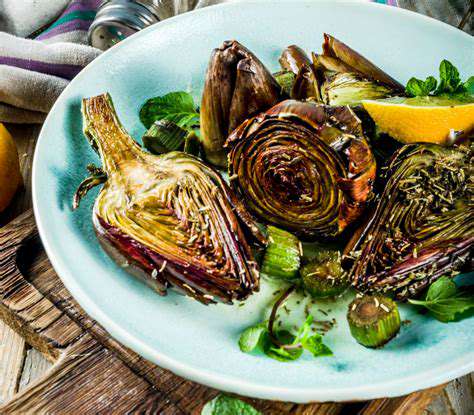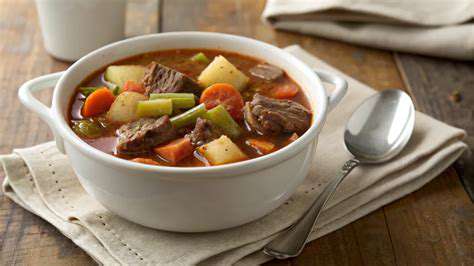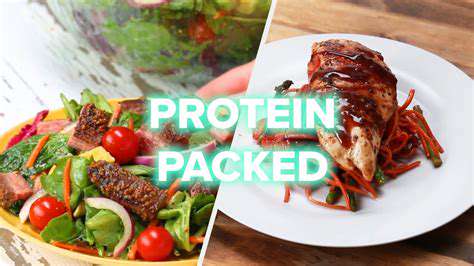Best Ways to Store Leafy Greens
Proper Storage for Maximum Freshness
Refrigerators are indispensable for keeping leafy greens fresh, but how you store them makes all the difference. With the right approach, you can dramatically extend their shelf life while preserving nutrients. Different greens—spinach, kale, lettuce—each have unique needs beyond simply tossing them in the crisper. Mastering these nuances ensures your produce stays crisp and vibrant.
Temperature and moisture control are critical. Excess humidity accelerates spoilage, while dryness causes wilting. The solution? Airtight containers or specialized produce bags strike the perfect balance—trapping just enough moisture without promoting bacterial growth. Pro tip: Line containers with paper towels to absorb excess dampness, replacing them every few days.
The Role of Airflow in Preservation
Many overlook airflow, yet it's fundamental for freshness. Overpacking the crisper creates stagnant pockets where moisture and ethylene gas accumulate, speeding up decay. Simple fixes like using drawer dividers or loosely bundling greens with rubber bands dramatically improve circulation.
For optimal results, give each leaf breathing room. This prevents condensation buildup that leads to slimy textures. Surprisingly, how you arrange greens matters—stacking them vertically (like files in a folder) often works better than horizontal piling.
Tailored Techniques for Different Varieties
Not all greens thrive under identical conditions. Delicate spinach benefits from damp paper towel wrapping, while heartier kale stores best in perforated bags. Romaine lettuce maintains crispness when kept whole with its core intact until use.
Washing strategy impacts longevity. Always clean greens thoroughly before storage, but ensure they're completely dry—a salad spinner followed by patting with clean towels works wonders. For herbs, treat them like fresh flowers: trim stems and place in water-filled jars with loose plastic coverings.
Freezing: Nature's Pause Button
When refrigeration isn't enough, freezing extends usability for months. Blanching is non-negotiable—this quick boil-and-shock process halts enzyme activity that causes texture degradation. For best results, blanch in small batches and immediately plunge into ice water to stop cooking.
Post-blanching, squeeze out excess water and freeze in single layers on trays before bagging. This prevents clumping, allowing you to grab just what you need later. Surprisingly, frozen greens work beautifully in cooked dishes—their texture change becomes irrelevant in soups, stews, or sautés.
Beyond Cold Storage: Advanced Preservation Methods
Cutting-Edge Packaging Breakthroughs
Today's packaging technologies revolutionize food preservation. Modified atmosphere packaging (MAP) replaces oxygen with nitrogen or carbon dioxide, dramatically slowing spoilage. Some films even contain antimicrobial agents or moisture regulators—extending shelf life by weeks compared to traditional methods.
Emerging smart packaging takes this further with time-temperature indicators and freshness sensors. These visual cues help consumers make informed decisions, reducing unnecessary waste. Some labels change color when products near expiration, while others detect gas emissions from spoiling food.
Precision Temperature Control
Industrial-scale solutions like controlled atmosphere storage (CAS) fine-tune environmental factors beyond what home refrigerators achieve. By adjusting oxygen (as low as 1-2%), carbon dioxide, and humidity levels, CAS can triple the storage life of apples and other produce.
The cold chain—temperature-controlled logistics from farm to table—is equally crucial. Breakthroughs in phase-change materials and vacuum insulation now enable portable cooling that maintains precise temperatures for days without electricity, revolutionizing fresh food transport.
Food-Specific Preservation Tactics
Different foods demand customized approaches. Vacuum sealing excels for meats and cheeses by eliminating oxygen exposure. For berries, a quick vinegar wash (3:1 water to vinegar ratio) followed by thorough drying destroys mold spores and adds days of freshness.
Dehydration remains one of humanity's oldest preservation methods, now enhanced with modern techniques. Electric dehydrators maintain perfect low temperatures (125-135°F) that preserve nutrients better than sun drying. The result? Shelf-stable produce that retains up to 90% of its original vitamins.
Consumer Habits That Make a Difference
Technology alone can't solve food waste—behavior changes complete the picture. Simple shifts like storing produce by ethylene sensitivity (never keep apples with lettuce!), understanding best by vs use by dates, and adopting FIFO (first in, first out) organization dramatically reduce household waste.
Meal prepping with preservation in mind helps too. Blanching and freezing excess vegetables on grocery day, making pesto from wilting herbs, or pickling soon-to-spoil produce turns potential waste into future convenience. These small acts collectively make massive impacts on sustainability.
Mastering Frozen Food Preservation
The Science of Freezing Greens
Proper freezing locks in nutrients at their peak. The key lies in understanding cellular structure—ice crystals rupture cell walls when formed slowly, leading to mushy textures. Rapid freezing creates smaller crystals, better preserving texture. This is why commercial flash freezing outperforms home methods, though home cooks can approximate it by spreading greens in single layers on sheet pans before final packaging.
Interestingly, some greens freeze better than others. Sturdy kale and collards maintain texture well, while delicate lettuces don't fare as nicely. For salads, consider freezing individual components separately—blanched green beans, roasted peppers, even dressing cubes—then combining after thawing for surprisingly fresh-tasting meals.
Blanching: More Than Just Boiling
This critical step serves multiple purposes: it destroys surface microorganisms, brightens color, and stops enzyme activity. Steam blanching often outperforms water immersion for nutrient retention, particularly with water-soluble vitamins. The timing precision matters immensely—30 seconds too long can turn vibrant greens dull and mushy.
For perfect blanching: use abundant boiling water (or vigorous steam), work in small batches, and immediately chill in ice water (with equal water-to-ice ratio). Test doneness by biting—properly blanched greens should be slightly softened but still crisp, with brightened color.
Pre-Freeze Preparation Secrets
Thorough cleaning is paramount, but technique matters. Submerge greens in cold water with baking soda (1 teaspoon per gallon) to remove pesticides, then rinse thoroughly. For greens with stems (like kale), remove tough ribs before freezing—they take longer to cook and can develop unpleasant textures when frozen.
After washing, employ the salad spinner then towel method: spin to remove bulk water, then spread on clean kitchen towels, rolling gently to blot remaining moisture. This two-step process ensures optimal dryness without bruising delicate leaves.
Packaging for Long-Term Quality
Oxygen is the enemy of frozen foods. Vacuum sealers provide ideal protection, but for budget-friendly options, use the water displacement method with freezer bags: seal almost completely, submerge in water to push out air, then finish sealing. Always label with contents and date—frozen greens maintain best quality for 8-12 months.
For frequent users, consider portioning—freeze measured amounts (like 2-cup bundles) for recipes. Some cooks swear by freezing greens in muffin tins (for individual portions) or ice cube trays (for small amounts to toss into soups).
Thawing and Usage Tips
When ready to use, skip thawing for cooked dishes—toss frozen greens directly into soups, stir-fries, or casseroles. For salads or fresh applications, thaw overnight in the refrigerator in a colander to drain excess liquid. Surprisingly, some greens (like spinach) can be crumbled directly from frozen into smoothies or sauces.
Remember that frozen greens work best in cooked applications where texture changes matter less. Their concentrated flavor often enhances dishes—try adding frozen kale to pasta sauces or blending frozen spinach into dips for nutrient boosts without prep work.
Read more about Best Ways to Store Leafy Greens
Hot Recommendations
- Traditional Foods for Day of the Dead
- Food Etiquette in Italy: Pasta Rules!
- Best Family Friendly Restaurants with Play Areas in [City]
- Review: The Best [Specific Dessert] Place in [City]
- Top Ice Cream Parlors in [City]
- Traditional Foods for Halloween
- The History of the Potato in Ireland
- Best Vegan Pizza Joints in [City] [2025]
- Best Bakeries for Sourdough Bread in [City]
- Food Culture in Argentina: Asado and Wine


![Best Mexican Restaurants in [City]](/static/images/28/2025-05/FineDiningMeetsMexicanFlair3AAnElevatedCulinaryExperience.jpg)






![Review: [Specific Bakery Name] What to Order](/static/images/28/2025-05/SavorySensations3ABeyondtheSweets.jpg)

